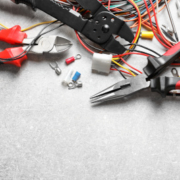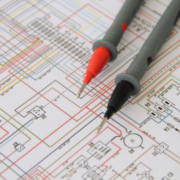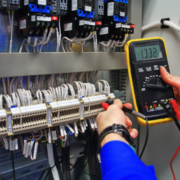Electrical Safety At Work
Electrical safety is important for several reasons. First, electricity can be dangerous if it is not used properly. In addition, it can cause fires, shocks, and even death. Second, electrical equipment can be expensive, and if it is not properly maintained, it can become a fire hazard. Finally, electrical safety is important because it can prevent injuries and property damage. This article ‘Electrical Safety At Work FAQ’ will look at the commonly asked questions regarding electrical safety in the workplace.
What are some common electrical safety hazards?
Some common electrical safety hazards include overloaded circuits, damaged or frayed wires, improper grounding, and exposure to live electrical conductors. Overloaded circuits are a common cause of electrical fires, so it is important to make sure that your circuits are not overloaded.
Furthermore, damaged or frayed wires can also be a fire hazard, it’s important to inspect your wires regularly and replace them if they are damaged. Improper grounding can be dangerous, as it can allow electricity to flow through your body if you come into contact with a live conductor. Lastly, exposure to live electrical conductors can be extremely dangerous, as it can result in electrocution.
What is a surge protector?
A surge protector is a device that is designed to protect your electrical equipment from damage caused by power surges. Power surges can happen when there is a sudden increase in the amount of electricity flowing through the power lines. This can happen during a thunderstorm, for example. Surge protectors work by absorbing the excess electricity and then redirecting it back into the power lines. As a result, this protects your electrical equipment from damage by preventing it from being exposed to the full force of the surge.
What is a electrical risk assessment?
A electrical risk assessment is a process of identifying, evaluating, and controlling the risks associated with electrical hazards in the workplace. The goal of a risk assessment is to identify potential hazards and develop controls to eliminate or mitigate the risks. Furthermore, risk assessments should be conducted on a regular basis, as electrical hazards can change over time.
What are some common electrical safety controls?
Common electrical safety controls include circuit breakers, fuses, and ground fault circuit interrupters (GFCIs). Circuit breakers are devices that automatically shut off the power to a circuit when it detects an overload.
Fuses are devices that contain a thin strip of metal that melts when too much electricity flows through it, breaking the circuit.
GFCIs are devices that shut off the power to a circuit when it detects an imbalance between the hot and neutral wires. As a result, this prevents electrocution if someone comes into contact with a live conductor.
What is a arc flash?
An arc flash is a sudden release of energy caused by an electrical arc. Arc flashes can be extremely dangerous, as they can cause burns, electrocution, and fires. Arc flash hazards can be minimized by proper maintenance of electrical equipment and by wearing personal protective equipment (PPE) such as arc-rated clothing and face shields.
What does a PAT Test involve?
PAT stands for Portable Appliance Testing. PAT testing is a process of testing electrical equipment to ensure that it is safe to use. The test involves visually inspecting the equipment, testing the insulation, and the earth continuity. This process helps to ensure that electrical equipment is safe to use and minimizes the risk of fires and shocks.
How often should you PAT Test?
PAT testing should be conducted on a regular basis, as electrical hazards can change over time. The frequency of PAT testing depends on the type of equipment and the environment in which it is used. For example, portable heaters used in construction sites should be tested more frequently than office computers.
What is a EICR Test?
EICR stands for electrical installation condition report. An EICR is a report that provides information on the condition of an electrical installation. The report includes information on the results of tests conducted on the installation, as well as any defects that were found. EICRs are important documents that can help to ensure the safety of an electrical installation.
Why’s my circuit breaker tripping?
Circuit breakers are designed to trip when they detect an overload. This is a safety feature that prevents damage to your electrical equipment. If your circuit breaker is tripping frequently, it may be due to an electrical problem such as a short circuit or an overloaded circuit. If you suspect that there is an electrical problem, you should contact a qualified electrician to investigate.
Electrical Safety Checklist
Our electrical safety checklist is a helpful guide to assess the safe operation of electrical systems and equipment. It covers inspections of wiring, circuits, outlets, appliances, and more, helping identify potential hazards and ensure compliance with safety standards, reducing the risk of electrical accidents and fires. Click here to see the Electrical Safety Checklist





